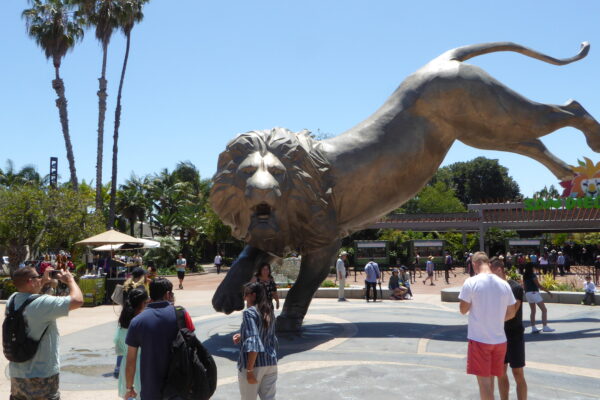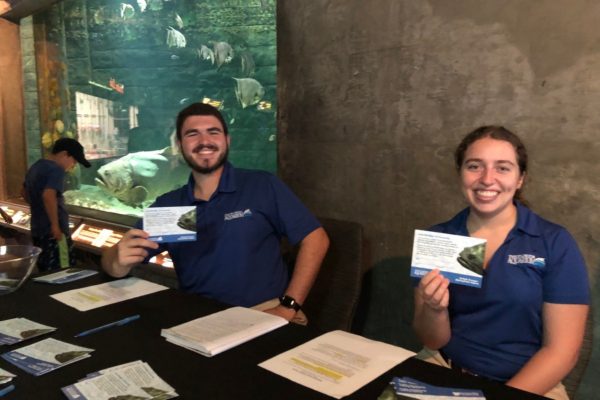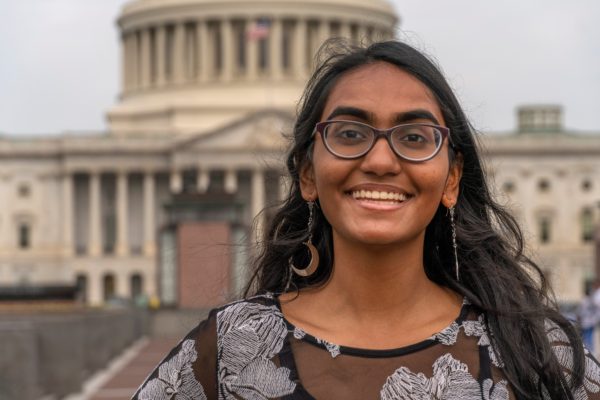This guest post is submitted by Debbie Colodner, Director of Conservation Education and Science from the Arizona-Sonora Desert Museum, and is the last in a 3-part series on their Innovative Solutions Grants+ project where they partnered with Leading for Good to see if they can move the needle on sustainable seafood in Tucson, Arizona.
With Tasting Sustainability, our effort under the Innovative Solutions Grants + Program, we wanted to go beyond Desert Museum business as usual. We understood that in order to make a difference for sustainable seafood in our desert city, we needed to go beyond efforts to raise awareness and get closer to the point of sale, particularly at restaurants. And we hypothesized that there could be a win-win in promoting sustainable seafood by reaching out to local restaurants and engaging millennial audiences. We were right!
Moreover, this effort has built our confidence and capacity to go outside of our comfort zone and begin a social marketing initiative. Working with our partner in this effort, Lead Local and their Leading for Good program, our Museum staff and interns alike had opportunities to learn about how to research an audience’s interests (In this case, local restaurants’ needs, wants and constraints), as well as inexpensive and rapid methods to prototype engagement ideas.
SINCE OUR LAST POST
As described in our last blog post, the strategy we chose for further testing was to co-host events with local restaurants, and we were able to test three different types of events last Spring.
- The first was at a downtown restaurant, in concert with “Agave Week,” which is focused on agave-derived and other native and local food products. The event attracted a large, diverse crowd, and our project interns encouraged people to take a seafood watch guide, take a pledge (using a photoframe cutout) and post it to social media. Our major lesson learned was that without food/beverage samples to offer it was hard to get this audience’s attention, especially at an event with a different theme, and interns were able to distribute 30+ guides, and only 6 people took a pledge. Nonetheless, the interns enjoyed the chance to raise awareness and participate in this locally grown and growing festival, and felt like they made an impact (awareness) on the people with whom they spoke.
- The second event was at a more “suburban” beach-themed restaurant which is already a Seafood Watch partner. The restaurant owner acknowledged an “aha” moment when he realized that there is value in promoting that partnership to attract younger customers. He bought all new uniforms for his wait staff – t-shirts promoting sustainable seafood. The event drew more customers than usual for a Friday night in the slow season, making it a success for the restaurant. And at this event, staff from the Museum and Monterey Bay’s Seafood Watch program staffed an educational table with interactive displays outside of the restaurant. Everyone entering the restaurant saw the display materials, and most stopped to talk - in contrast to the Agave Fest, the sustainable seafood messaging was the focus in event advertising, and that helped engagement. But most of the diners were older adults, many from the Museum’s docent and volunteer corps, so still an ongoing challenge in reaching younger adults.
- The third event was “World Oceans Night” at the Desert Museum. Based on the connections forged by our Interns, two new restaurants were able to attend and promote their sustainable choices, along with several non-restaurant community partners – a trend we hope to continue. Restaurant participants were pleased, indicating that with a crowd filled with many millennial-aged adults among the 900 people who attended, they would like to come again next year and that they would like to continue to partner on sustainable seafood issues, including moving toward becoming a Seafood Watch partner (for two of them). Anecdotally, we can say again that developing a seafood themed event was helpful, and with a push we did better in terms of attracting a millennial audience; however, next time we will look to have better systems in place to track engagement and the ages of those attending.
Throughout this effort we’ve had great response from the local restaurants – nearly all we asked were interested in working with us on this issue, including in developing these events. And our experience suggested that the chefs were the key people with whom to work. However, our research with the restaurants and our experience at these events revealed that local awareness of sustainable seafood has not yet reached the threshold above which it would be valuable for the restaurants to tout their commitments. Somewhat ironic given that we started this project with the proposition that we needed to do more than awareness-raising! And, again, we now know that there are several restaurants in the Tucson area who see benefit in helping the Museum build this awareness, even if they are not ready to become full Seafood Watch partners.
The other major goal of the project was to enhance the Museum’s engagement with younger adults (millennials), and to empower young adults to make positive change in their communities. At the start of the project, 3 of the 7 interns involved reported that they were unsure they could do anything to impact ocean health and fish populations. In the final survey, 100% of responding interns were sure they knew what they could do to make a difference! And while initial surveys revealed that most interns viewed the museum as a beautiful place to see desert wildlife, at the conclusion, one participant called the Desert Museum “a leader in conservation and collaboration to connect the community with the natural world.” We also learned that college students can be persuasive and engaging spokespeople for more sustainable seafood promotion at restaurants, and that projects like this help them develop skills for making positive change in their communities.
OUR ADVICE TO OTHERS
So in summary, here are some lessons for other zoos and aquariums that may want to advance sustainable seafood:
- Engage the power of young professionals or university students to help make the case that millennial customers care about where their food comes from
- Reach out to local restaurants, interview chefs and owners to gauge their awareness and interest
- Work with interested chefs/owners to partner on strategies to build the local sustainable seafood brand
- Recognize their interest and steps toward seafood sustainability, even if they may be short of full Seafood Watch partnership
- Encourage restaurants to promote their sustainable seafood choices more boldly, and explore opportunities for mutually beneficial events (noting that the public may not yet be aware!)
- Help create a network of local chefs/restaurant owners





